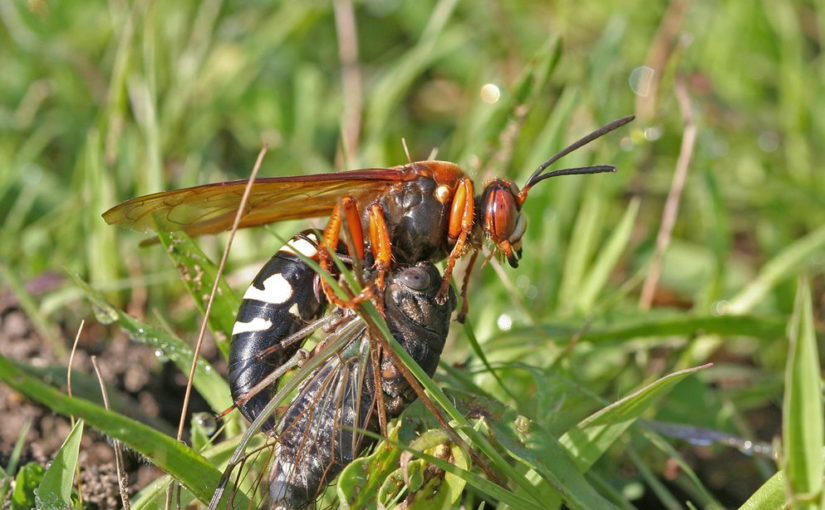Today’s post comes from Jared Sanders, with information provided by Erin Postenka. They are both members of the Resource Management Team at Pinery Provincial Park.
In my youth, the sight of any yellow and black flying insect was terrifying to me.
Any child who has been stung quickly learns that bees and wasps are not to be messed with!
Fast-forward a few years to one of my family’s annual camping trips to Pinery Provincial Park.
My parents had just bought me a scoop of ice cream when we stumbled upon a sign that depicted one of the scariest sights I could have imagined: a wasp several times bigger than any yellow jacket I’ve seen!

I ran back to my parents and they said the same thing they always did: “Leave them alone, and they’ll leave you alone.” The eight years of anecdotal evidence I had up to that point seemed to say otherwise.
To my great surprise, the trip went off without an attack from one of these seemingly terrifying insects. But little did I know, this wouldn’t be my last encounter…
The Eastern Cicada Killer Wasp
The summer of 2019 was my first year working with the Pinery Discovery team. I was thrilled to work at the park, and rediscover its fascinating wildlife as an adult.
My supervisor informed me that one of the projects on our agenda for the summer would be putting up signs to educate the public and bring awareness to the Eastern Cicada Killer Wasp (Sphecius speciosus), a rare species that annually nests in the park.
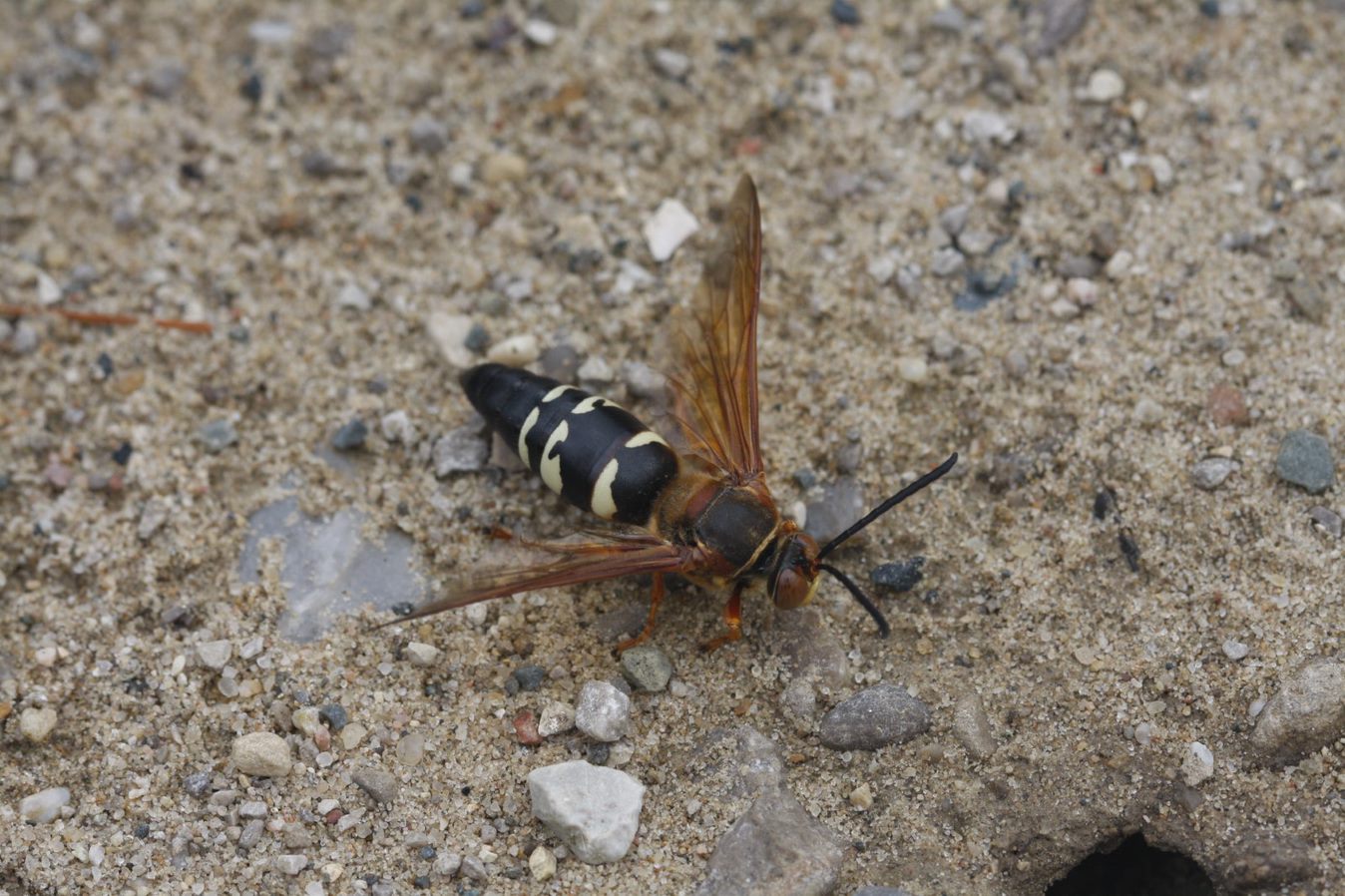
These were the very same insects from the poster that scared me all those years ago. Having a few more years under my belt, I had gotten over my fears. I was eager to learn more about this rare species and help with its conservation.
I would now like to share with you some of what I learned in the hopes that you too will find a new appreciation for these seriously misunderstood wasps!
A misunderstood creature
The Eastern Cicada Killer Wasp is an extremely rare species in the province of Ontario, but we are lucky to find them in several locations throughout Pinery.
They get their name from the cicadas they use to feed their larvae, but the term “cicada killer” is actually a bit of a misnomer!
The adult wasps don’t immediately kill cicadas, rather they paralyze them — but that’s only one of many misconceptions which give them a bad reputation!
One scrappy wasp
Cicada killer wasps emerge as adults in early July after overwintering in underground burrows as cocooned pupae.
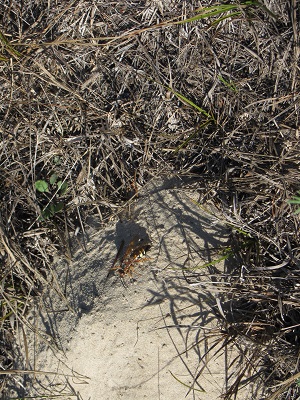
These summer months are when they are most visible, as they fly around to defend their territories and seek out mates. After mating, females dig a nest in sandy, sun-exposed soil.
These nests can be up to half a metre deep, and are easily visible because as the wasp digs, she piles the sand she removes around the entrance to their burrow, creating an easily recognizable mound.
When she’s done digging, the female cicada killer wasp goes out on the hunt!
She looks for the biggest cicada she can find, and injects it with a paralyzing venom using her formidable stinger. The cicadas are often much heavier than the wasps themselves and, in most cases, are too heavy for them to fly with.
But not to worry; these clever mothers-to-be have an ingenious way of getting around that!
Rather than flying back to their nests, the wasps repeatedly climb trees with the cicada in tow and jump off, gliding down in the direction of their nest. They then drag the paralyzed cicada into their mounds, creating what looks like the world’s most morbid slide.
She positions the still-paralyzed cicada in her burrow and lays an egg under its second or third leg. This cicada will provide food for her larva until it’s large enough to spin a larval case and overwinter.
Females lay an average of 15 eggs in each burrow and provision each with 1-3 cicadas — this means that a single female wasp may collect over 45 cicadas in her short lifetime.
However, she doesn’t keep any for herself. Like most other bees and wasps, adults feed on nectar from flowers, and have left their cicada-munching days far behind them.
Leave them be
Despite their fearsome appearance and tough-guy name, cicada killer wasps are actually entirely non-aggressive.
They will only sting humans when handled, as a last resort. Even when people walk in an area with multiple burrows, they will carry on with their business and hope that you will do the same.
Not only should we not be afraid of cicada killer wasps, we should be actively trying to protect them. These wasps play a role in limiting cicada populations, which helps to maintain ecological balance.
The conservation of Eastern Cicada Killer Wasps is important because the preservation of native biodiversity is crucial to maintaining a resilient and functional ecosystem in Pinery.
Take a closer look
This year has posed a new barrier to Eastern Cicada Killer Wasp conservation.
Recently, Asian Giant Hornets (otherwise known as “murder hornets”) have made a buzz in the North American news cycle and on social media.
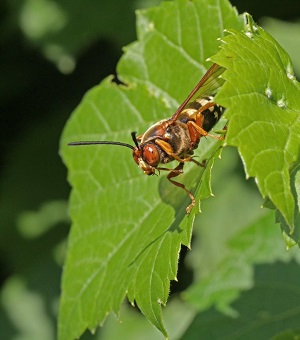
These hornets have not yet been found in Ontario, and only a handful of sightings have been documented in British Columbia.
While they are dubbed “murder hornets”, their introduction poses the biggest threat to honeybee farming and Canadian ecosystems as a whole, rather than to humans.
Because these insects have become so notorious, some people who have only heard of “murder hornets” in passing may find that Eastern Cicada Killer Wasps fit their description.
As a result, conservation efforts now have to take into account the heightened fear of large stinging insects and a public perception that equates any intimidating wasp with “murder hornets”.
A new appreciation
Now that I have had an entire summer to learn about, appreciate, and protect these creatures that are part of Pinery Provincial Park’s unique biodiversity, I wish that I could go back to my eight-year-old self and help him be less afraid.
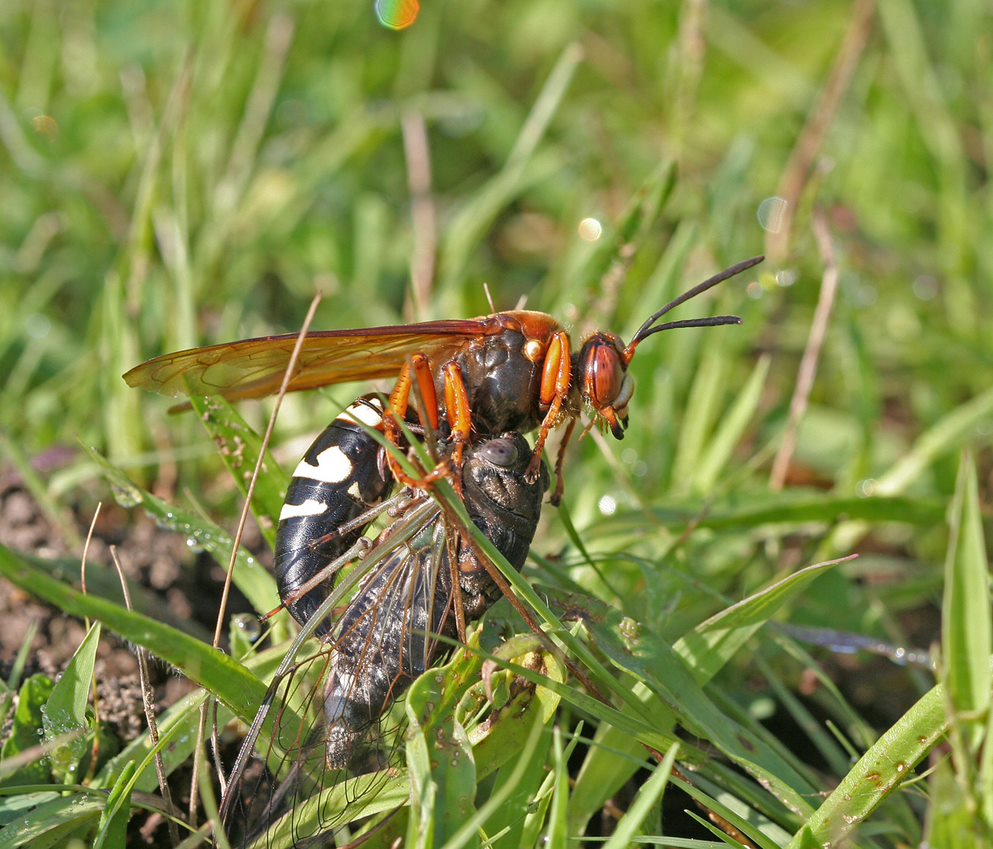
I now know that cicada killer wasps are nothing but gentle giants who are truly misunderstood.
Especially now, with “murder hornets” in the back of everyone’s minds, it is more important than ever to teach people about this rare species, so they don’t get squished out of fear by a camper who once thought the same as I did.
